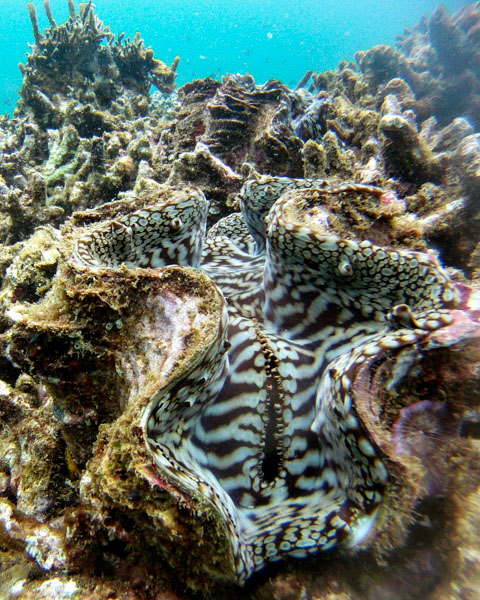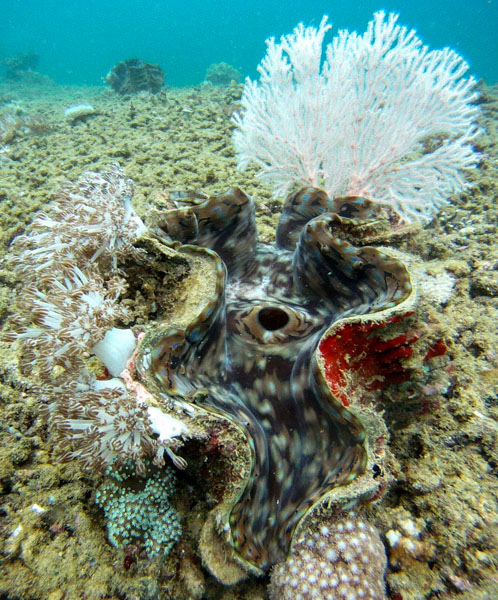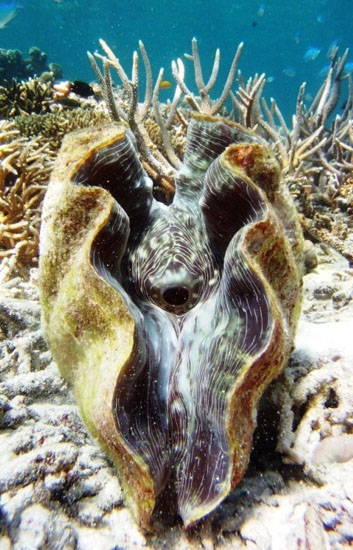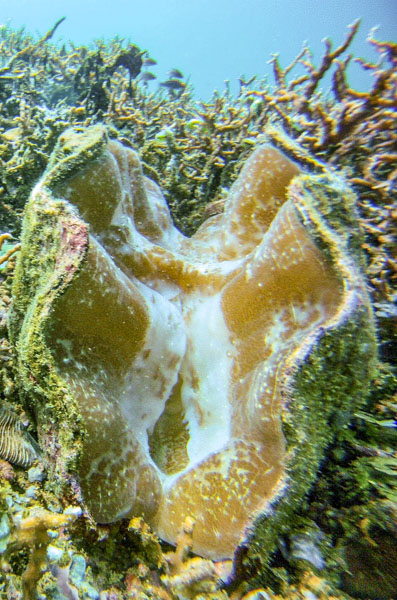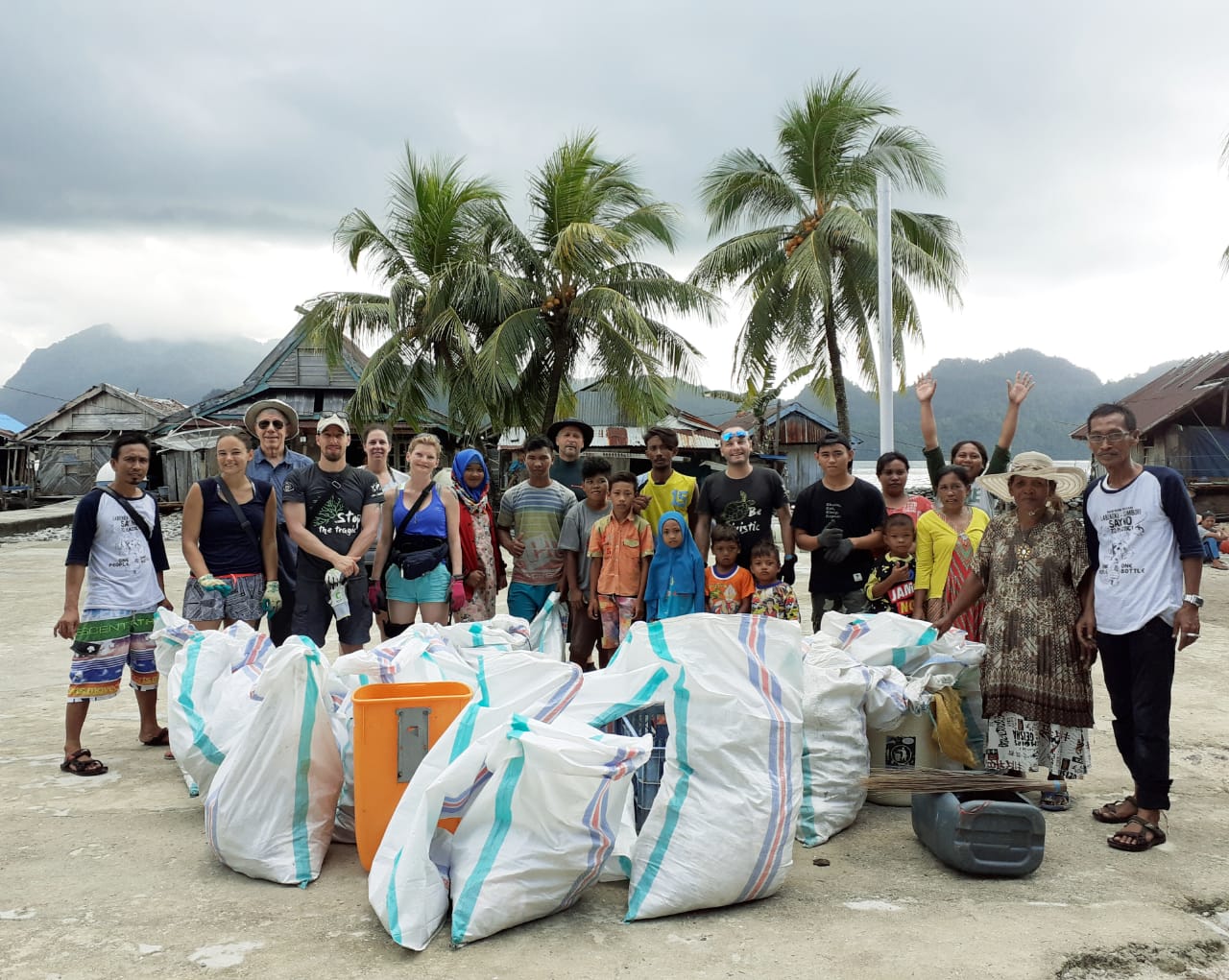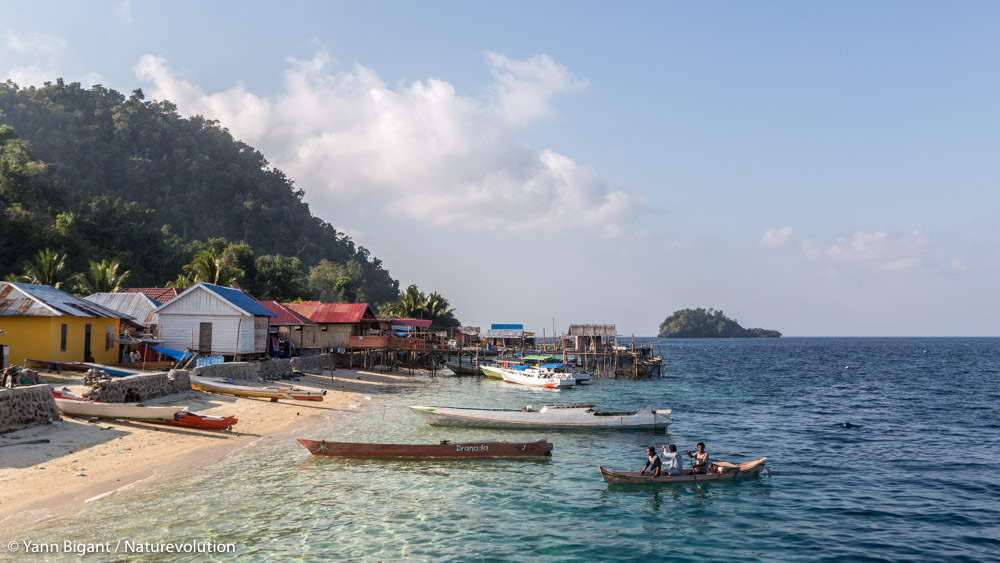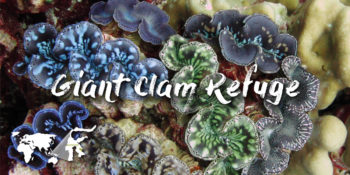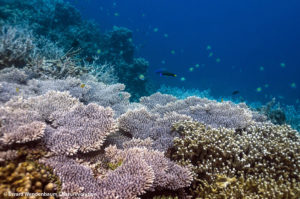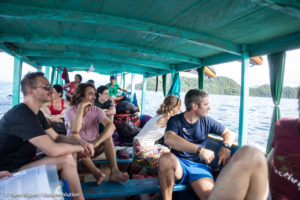PORTRAIT – It is high time we introduce our main partner in marine conservation in Sulawesi : Habib, from Toli Toli Giant Clam Conservation. Those among you who joined our 2019-2020 ecovolunteer missions met him in the field, but did you know that, for the last 10 years, ‘Pak Habib’ dedicated his life to protecting giant clams, these enormous bivalves that happen to play a key role on Pacific coral reefs ?
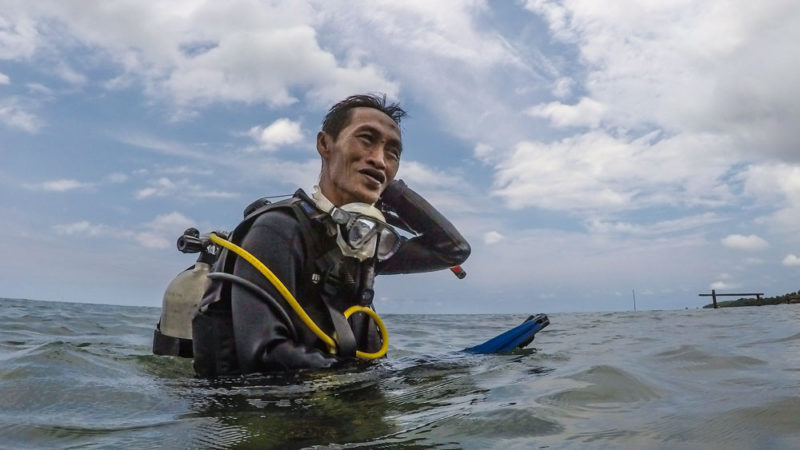
Welcome to Toli Toli
The little wooden house doesn’t look anything special. Perched on stilts on the foreshore, you’d drive by without stopping if not for the tall sign erected near the road with a picture of one of the most scenic view of Labengki island. Another banner cover half of the house : “Menata laut, menata masa depan”. We’d say in English : “Taking care of the sea is to preserve our future”. We are a few kilometers north of Kendari, in the coastal village of Toli Toli, right in front of the ocean: welcome to the headquarters of Toli Toli Labengki Giant Glam Conservation.
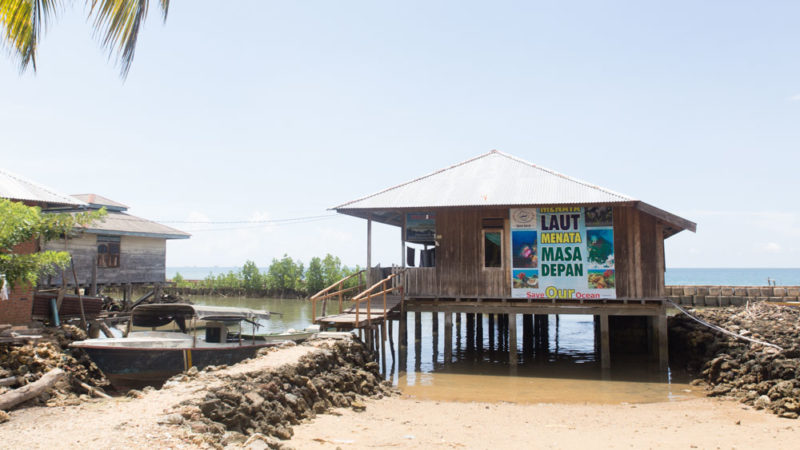
We access the house via a raised jetty and wooden walkway just like we would climb onboard a ship. Inside, a vast amount of shells lie heaped against the walls. Conchs and sea snails, nautilus, gorgons, branching corals, along with a sheer number of double shells of all sizes: the famous giant clams lending their name to the organization. This collection of coral reef wonders, Habib, Toli Toli’s founder, gathered it over his years spent diving with his team on the local coral reefs.
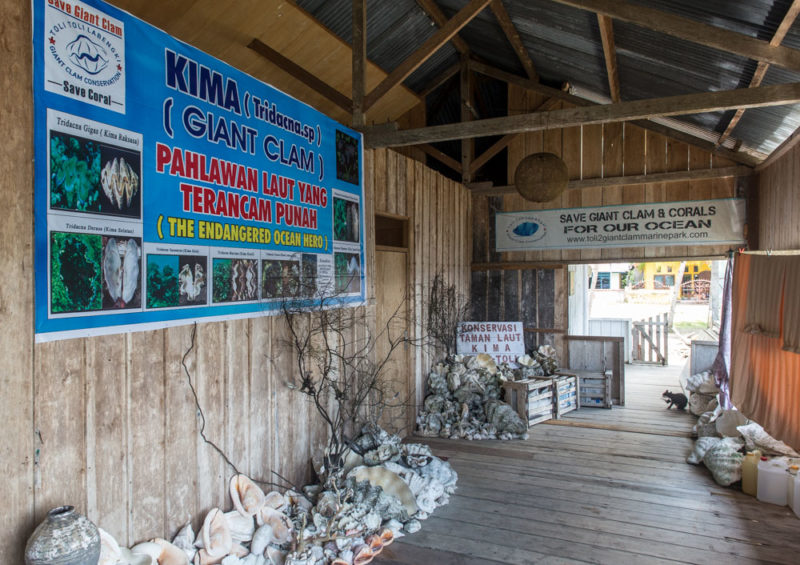
Habib, pioneer of giant clam conservation
A native of Southeast Sulawesi, Habib came back to his home province about a decade ago. During the twenty or so years before his return, he had been a writer and a journalist in Makassar, on the other side of the island, then a tourist guide leading groups overseas. Settling down in Toli Toli, he noticed that the giant clams he used to see on the reefs of the Matarape bay were becoming increasingly scarce. The reason : an excessive collection of these mollusks, however fully protected in Indonesia, by fishermen from the surrounding villages.
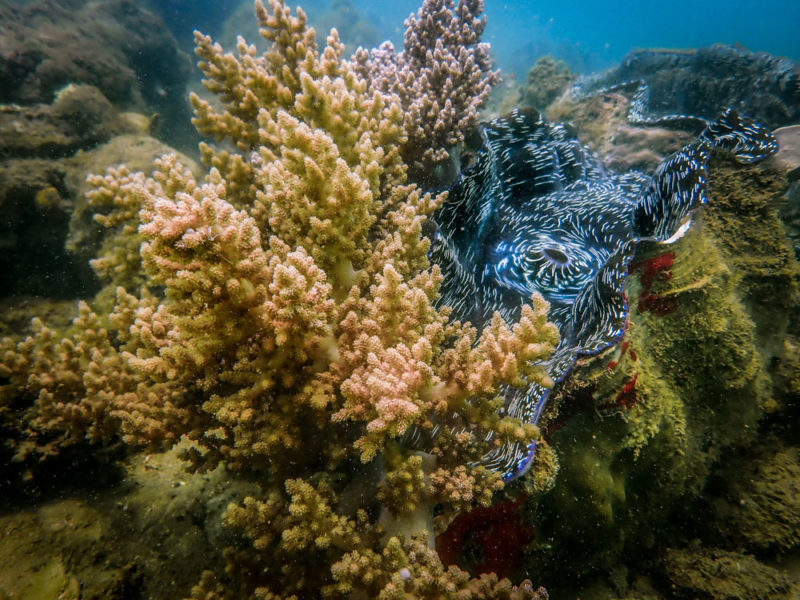
Confronted with this issue, Habib set himself on a mission to protect giant clams, also known as kima in Indonesian. Gathering a team of passionate divers under the banner of Toli Toli Labengki Giant Clam Conservation, he went on to collect thousands of specimens from all over the bay and relocate them on a few dedicated reefs, easy to watch and accepted beforehand by local fishermen as no-take zones.
After ten years of work, a total of 8000 giant clams of 8 different species and of different sizes, along with other marine creatures (sea stars, sea cucumbers, anemones, etc.), have been gathered from nearby reefs, thus spared from illegal fishing. Habib became a local figure : he is not only recognized by the institution managing protected areas (BKSDA), with whom he signed a collaborating agreement, but also among the local communities whom he helps with tourism development and recognition of customary rights.
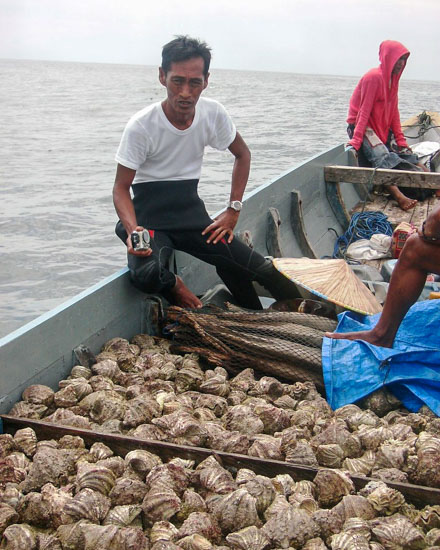
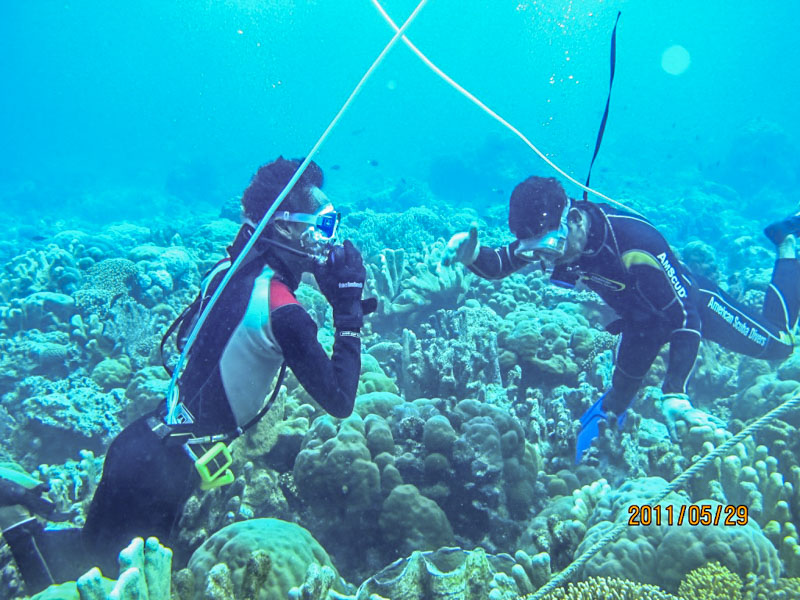
What exactly are giant clams ?
Giant clams are, in a biological sense, a subfamily of bivalve mollusks made up of 2 genus : Tridacna sp. consisting of 11 species, and Hippopus sp. consisting of 2 species. In theory, the usual name (giant clam) should only refer to the largest of them (T. gigas), but the word is often used for all 13 species.
Some giant clams are the largest shells in the world. The largest (T. gigas) can reach 1,5m in length, weight several hundred kilos and live more than a hundred years. The shell of some species is smooth on the outside (T. derasa), whereas other are ribbed both vertically and radially like the fluted giant clam (T. squamosa).
Giant clams of the genus Tridacna anchor themselves to the coral, whereas those of the genus Hippopus prefer to set themselves directly on the sand.
Researchers keep making discoveries on giant clams. In 2014, a new species has been identified in Australia (T. ningaloo) while the species T. noae was finally distinguished from the small giant clam (T. maxima) thanks to DNA studies. The species identified in 2008 as T. crostata was eventually revealed, after a close study of samples collected at the end of the 19th century (!), of the same species as T. squamosa. The 11th species of the genus Tridacna has not been described yet.
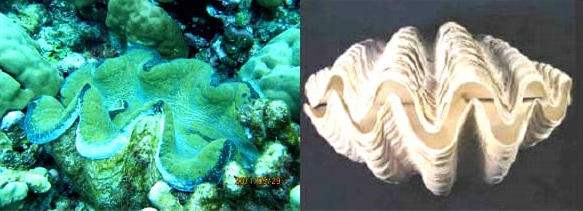
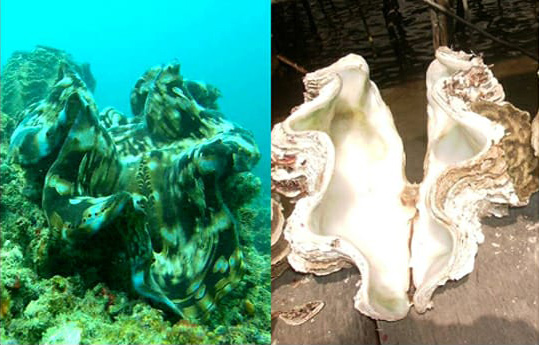
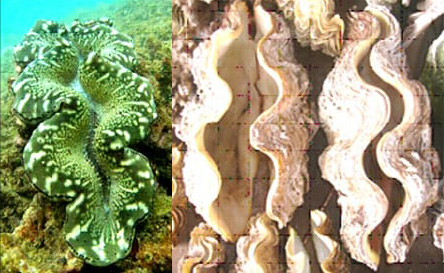
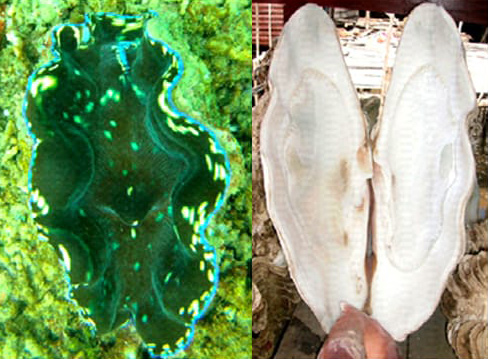
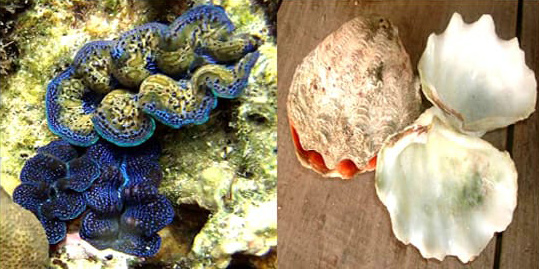
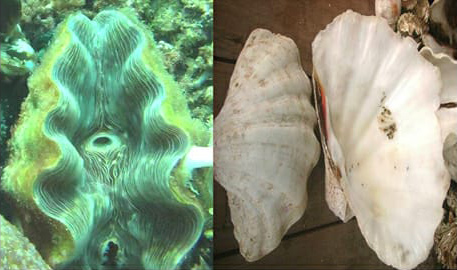
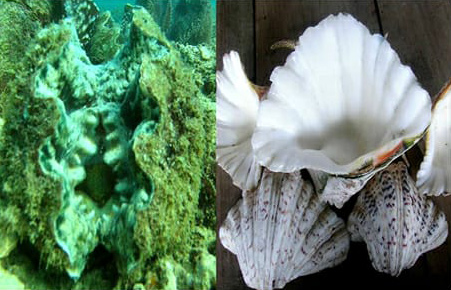
Where do they live ?
There are today 13 recognized species of giant clams, living in the coral reefs of the Indopacific and the Red Sea. But Sulawesi and the surrounding islands, located at the heart of the Coral Triangle, shelter the highest number of species in the world. We observe a total of 8 species, from the smallest to the largest, often on the same reefs. Only the islands of Fiji & Tonga harbour a comparable diversity, thanks to the presence of an endemic species (T. mbalavuana or devil clam). In 2016, two specimens of this species have incidentally been found in New Caledonia, about 1300km from their known range.
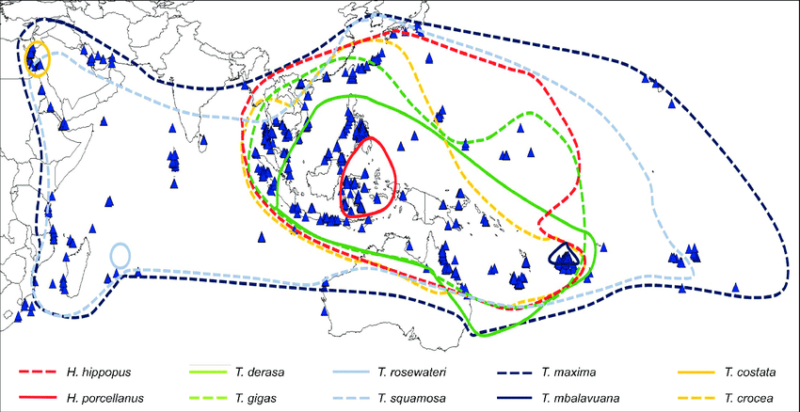
Together with an astounding number of coral species and 5 of the 7 species of marine turtles, the impressive diversity of giant clams is one of the reasons that makes the underwater biodiversity of Sulawesi one of the richest in the world – and one of the reasons we are locally involved, furthermore with Toli Toli.
What makes Southeast Sulawesi, the location of our projects, an exceptional area ?
No less than 8 species have been listed, including 6 of the 11 known species of the genus Tridacna and the 2 species of the genus Hippopus.
More precisely:
- The giant clam, the largest (Tridacna gigas)
- Tridacna derasa, the smooth giant clam or southern giant clam, another very large species
- The small giant clam (Tridacna maxima)
- The fluted giant clam (Tridacna squamosa)
- The crocus clam or crocea (Tridacna crocea) also known as boring clam because it actively embeds itself into the coral he anchors to. It is sought after in the aquarium trade for its colors, but is particularly hard to collect.
- Tridacna noae, or teardrop clam for its tear-shaped patterns.
- The horse hoof clam (Hippopus hippopus), appreciated as a delicacy in many southeast asian countries.
- Hippopus porcellanus or the ‘porcelain clam’ (china clam), whose very small range consists of only a part of the Coral Triangle.
A comparison shell and live animal of all species listed by Toli Toli can be found on their website.
A key species for coral reefs
Giant clams are key to the life and health of coral reefs. With their large shell, they host many different creatures – corals, algae, sponges, crustaceans – and are themselves food for several dozen species – fishes, octopuses, crabs, etc. – contributing to the biological diversity of coral reefs.
A study proved that the sole presence of giant clams on a degraded reef leads to increase from 2 to 14% of the cover rate of anemone, soft corals and sponges in just 3 months, all the while fostering a higher abundance and diversity of fish.
They are also, with their massive carbonate shell, shapers and builders of the reef structure itself. In Polynesia, there are even natural mounts of these shells building up small islands, the mapiko,with live clams underwater and empty shells pushed above the waterline.
But the key point Habib likes to highlight when he raises awareness about giant clam in fishermen villages, is their role as ‘cleaners’ of the reef : a single giant clam can indeed filter several tons of seawater every day, thus helping to maintain a healthy environment for other species. And notably for the phytoplankton (plankton getting their energy from photosynthesis) who is responsible of more than 50% of the oxygen in our atmosphere !
To read more about giant clams, we recommend this excellent article written by IRD New Caledonia (in French). In English, a meta-study on the impacts of giant clams recently compiled more than 500 scientific publications on this topic. In Bahasa Indonesia, Mongabay published an article on the situation of giant clams in Indonesia (mentioning Toli Toli).
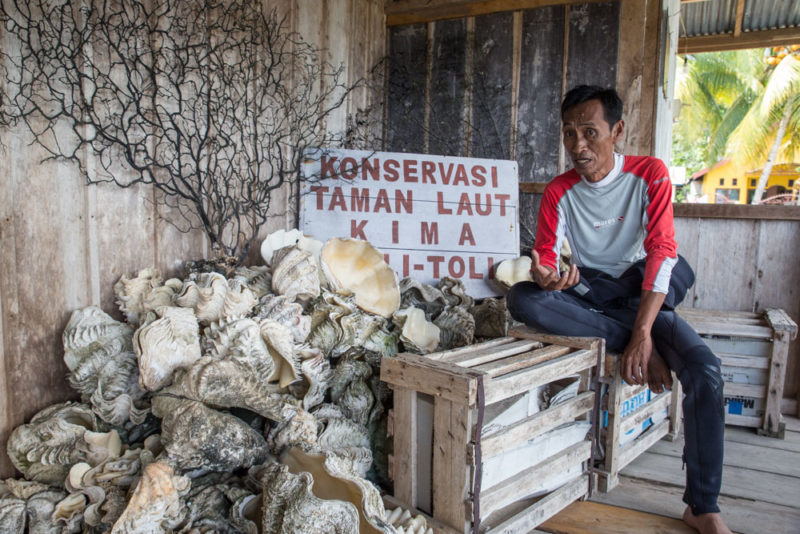
Kima boe, potential new species or local variation ?
Habib suspects that one of the species of giant clam from the Matarape bay is different from species already known. He calls it Kima boe or watery giant clam, the name local Bajau fishermen (Bajau are Southeast Asia’ sea nomads) use to quality this species.
Visually, Kima boe looks a lot like the ‘china clam’. There would be no doubt to the species if not for two major differences: it is much larger than the largest specimens of H. porcellanus, and it anchors itself to the coral like Tridacna do, whereas Hippopus usually set themselves on the sand. Is such a behavior caused by a specificity in the local environment or due to genetics? Are there kima boe elsewhere in the Coral Triangle? So many questions that remain unanswered until scientists start to study this particular clam.
A wide range of threats
While giant clams have been fished on the coral reefs of the Indo-Pacific for centuries, they are today under threat. In Indonesia, all species are officially protected and collecting them is prohibited. Internationally, they are listed in the Appendix II of the CITES convention and their export requires a special permit. But the pressure on giant clams is not decreasing. The large Tridacna Derasa, for instance, is already considered extinct around the islands of Sumatra, Java and Borneo.
Given the size of the molluscs and the virtual absence of surveillance patrols even in protected areas, the temptation is high for fishermen from surrounding villages to bring back a few for diner. We saw that from our own eyes on one of our missions where the captain of the boat caught a few shells for his lunch, including a few protected species, before we were fully aware of the matter.
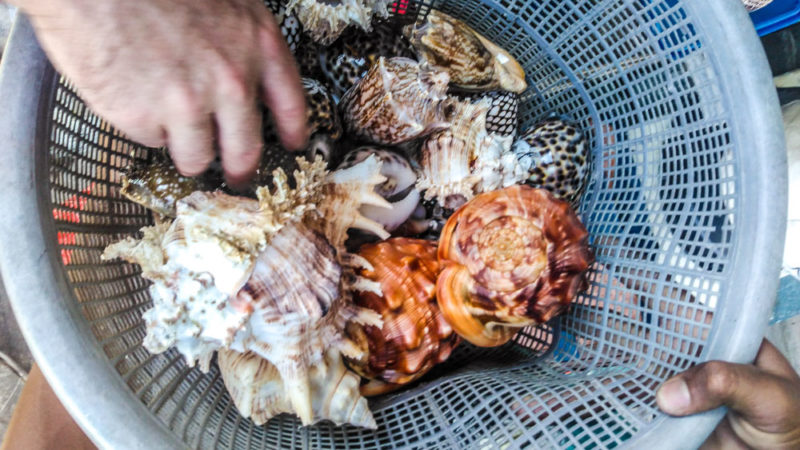
But giant clams are fished for other reasons. Their meat is a delicacy in several Asian countries. The mantle of some species sports fantastic patterns and almost fluorescent colors, making them popular in the aquarium trade, especially in Europe, Japan and in the US. They are not necessarily the biggest: a small crocus clam of 10-15cm with bright colors can fetch 50 to 80 €, a significant sum in the island communities of Indonesia.
The shells have always been sold to tourists, turned into Terrazzo tiles, and even massively exported to the West and to Japan at least until the end of the 90s, until CITES eventually regulated the trade of giant clams. It is no coincidence that the common name of giant clams in French refers to the traditional use of their shells as stoups holding holy water in churches rather than to the biological nature of the animal itself. Finally, their recent use as substitute for ivory in China revealed large-scale poaching in the South China sea and The Philippines.
Are giant clams the new victims of the ivory trade ?
The trade of ivory in China being increasingly controlled and the possession of ivory objects less and less socially accepted, carving workshops, traders and buyers, unaware of the damage caused to coral reefs, fall back on giant clam shells, often poached in the Philippines and in the South China sea. A double shell of large size can thus fetch between 1000$ and 2000$ on the international market. In 2015, giant clam poaching in the South China sea has even been filmed by the BBC. If the authorities have since taken steps to stop the damage, poaching was carried on such a large scale and the methods used to detach the giant clams from the reef were so damaging that hundreds of reefs have been wrecked and turned barren.
That’s not the whole of it : two other threats bear down, not only on giant clams, but on all the reefs of Sulawesi, especially in the areas we’re involved. On one hand, sediment run-off from nickel mining operations, very common on the coastal districts of North Konawe and Morowali, suffocate the reefs under several centimeters of sediment. On the other hand, phytosanitary treatments of palm oil plantations located inland undoubtedly also have a major impact on reefs.
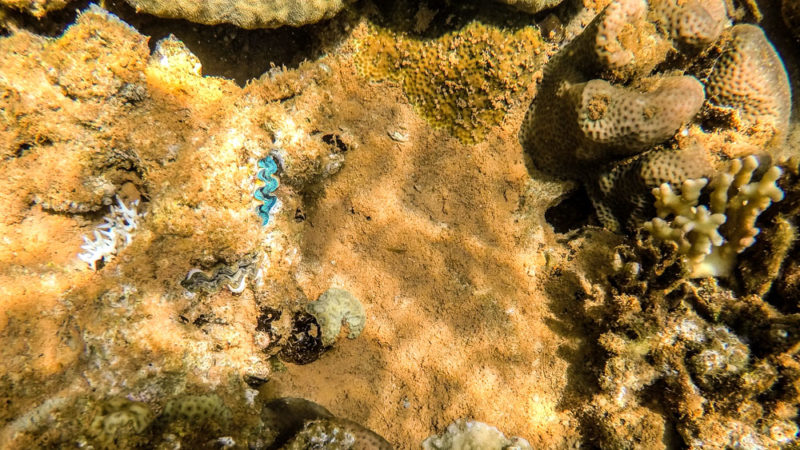
The relocation of giant clams
The relocation of giant clams to specific sites that Habib spontaneously set up is not an isolated case.
In the Pacific, in New Caledonia for instance, fishermen worried by the depletion of giant clams on local reefs cluster them in a lagoon located near their land in order to let them grow and be able to easily harvest a few for their personal consumption or for selling, yet also sometimes for the simple pleasure of watching them underwater. A kind of giant clam farm in a half-wild environment.
Such a concentration of giant clams also increases their reproduction rate and, marine currents helping, can have a beneficial effect on restocking in the surrounding reefs.
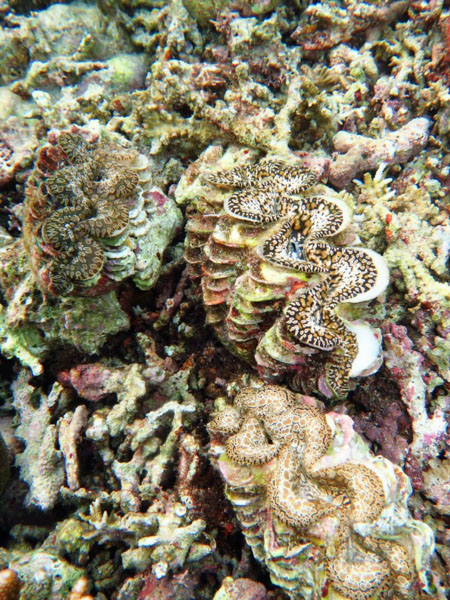
Moreover, carried out properly, relocating giant clams can have very little negative impact on relocated individuals. Habib and his team have gradually perfected their techniques and knowledge, and experience a 2-3% mortality rate during transportation, and 2-3% after relocation.
What about giant clam farming ?
Research centers have developped techniques to breed giant clams, whether for local consumption, export (notably to France), for the aquarium trade, or to be reintroduced on reefs where they have disappeared.
In French Polynesia for example, a collection technique was developed by research institutes so that a greater number of giant clam larvaesurvive predation and reach adulthood, allowing both reintroduction and commercial trade. In Palau and in Australia, to name but a few, giant clam farms breed some species popular among aquarium lovers.
Perspectives : a new shelter for giant clams
Starting with a first memorandum of understanding (MoU) signed in late 2018, Naturevolution has now been working with Toli Toli for two years. Habib and his team took charge of the animation of our ecovolunteer missions in 2019-2020 and of all associated activities (beach cleanups, mangrove reforestation, reef observation, etc.), carrying out awareness-raising activities in the villages, especially around the issue of plastic waste, while facilitating relations with local institutions.
In order to now go further in the protection of giant clams and coral reefs in Southeast Sulawesi, we are planning to work together for a new giant clam refuge located at the southeast of Labengki island.
Beyond the benefits of such clusters to giant clams themselves, this shelter will aim at becoming a privileged place for research on giant clams and a way to raise awareness among villagers and local fishermen on the urgent need to protect giant clams and coral reefs. Finally, this new tourism asset will generate additional income for local communities.
Accepted as a no-take zone by the local community (Labengki Kecil) and the institution managing the province’s protected areas (BKSDA Sultra), this refuge will be located within the Teluk Lasolo protected area, which consists of the large island of Labengki, the smaller islets and reefs located nearby and part of Matarape bay.
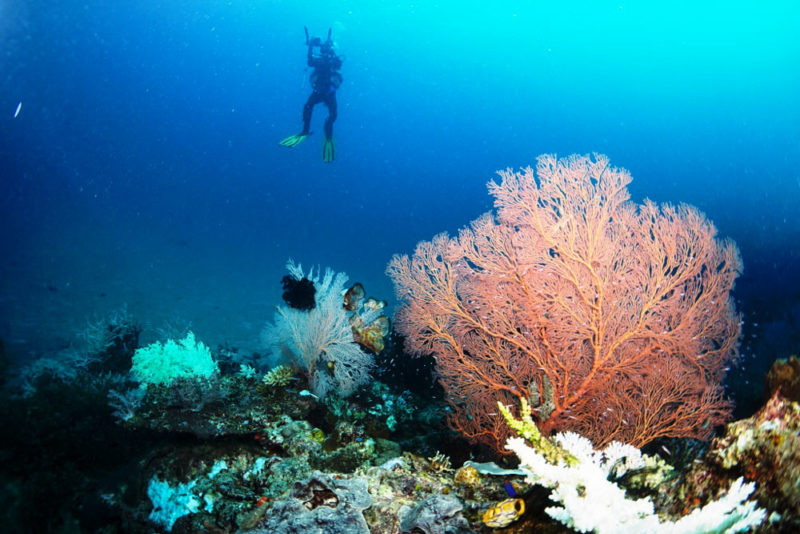
How you can help
We are now only missing financial support for each step of the project:
- The collection, transport and relocation of giant clams to the shelter by 3 specialized divers,
- Training of a team of villagers to monitor the relocated clams and to manage the shelter together with the community,
- Raising awareness with community gathering and school-based interventions in order to promote a sustainable management of natural resources,
- Promotion and communication,
- Providing information and raising awareness among tourists.
The closure of borders due to the COVID pandemic has been a major blow to our financing capacities, as they had so far been mainly the result of our ecovolunteer missions.
You can support this project or one of our other projects in Sulawesi by donating on one of our dedicated pages below or by joining our next eco-volunteering missions in Indonesia:


